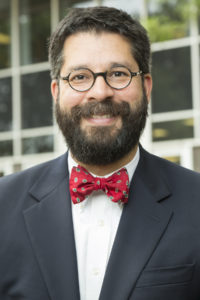Chapter 9 – Sexual Orientation and Gender Identity
9.1 Acknowledging Bias Against Sexual Orientation and Gender
Camilla Curren MD
Bias Toward Sexual and Gender Minorities and the Hidden Curriculum
In 2014, a study of lesbian, gay, bisexual or transgender (LGBT) general surgery residents determined that one-half of them actively concealed their sexual orientation or gender identity from colleagues due to fear of discrimination or reprisal in the workplace.1,2 In another study, 82% of heterosexual first-year medical students held at least some degree of implicit bias against gay and lesbian students.3 In the study on surgery residents, none of the trainees who experienced overt homophobic remarks or slurs reported these incidents; one of the reasons cited was the feeling that nothing would be done about it if the event is reported.2
Bias against LGBT persons can be embedded in the hidden curriculum of an academic institution.1,4 Hidden curriculum has been defined as “the attitudes and values conveyed, most often in an implicit and tacit fashion, sometimes unintentionally, via the educational structures, practices, and culture of an educational institution”5 and as the combination of implicit and explicit biases, institutional climate, and usual behaviors at an academic medical center.1 Discrimination and bias support ongoing identity concealment among sexual minorities, which in turn deprives others of LGBT faculty and peer role models. This leads to an institutional atmosphere that accepts or does not recognize biases and the need to reform attitudes toward LGBT learners, faculty, and patients.1

Effects of Professional Bias Toward LGBT Health Providers
John Davis, PhD MD, former Associate Dean for Medical Education at OSU College of Medicine and national expert on LGBT issues, now Associate Dean of Curriculum at the University of California at San Francisco, notes that he witnessed derogatory references to sexual minorities during his years in training. However, Davis feels that it did not hold him back in his career. In fact, he encountered mainly supportive behavior when he came out as a medical student (he was the only openly gay student in his medical school class). Davis adds that he did, however, choose a specialty (infectious diseases) and work environments that were supportive of rather than hostile toward LGBT physicians.
In contrast, a Columbus, Ohio primary care physician in private practice, who retracted permission to use his name after being interviewed for this publication, still is not open about his sexual orientation and fears that some of his patients might leave his practice were they to discover that he is gay. Now middle-aged, he notes that, although he never experienced explicit bias in medical training, he felt lonely and isolated as a medical student and resident, and afraid to share his sexual minority identity with peers or attending physicians at OSU Wexner Medical Center. Eventually, he did, however, find some support among faculty at Nationwide Children’s Hospital, which he believes had a more inclusive environment at the time.
Evidence of increased stress and burnout exists when health care providers experience discrimination or social bias in the workplace.1,6 In a 2011 study of self-identified LGBT physicians, 10% were denied referrals from heterosexual colleagues, 15% reported harassment by a peer, 22% experienced feeling socially ostracized, 65% witnessed derogatory comments about LGBT individuals, and 27% knew of discriminatory treatment of an LGBT coworker.6